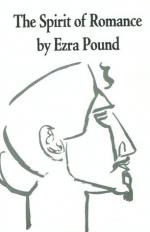|
This section contains 7,436 words (approx. 25 pages at 300 words per page) |

|
SOURCE: "So-Shu and Picasso: Semiotic/Semantic Aspects of the Poundian Ideogram," in Papers on Language and Literature, Vol. 28, No. 2, Spring, 1992, pp. 185-205.
In the following essay, Géfin examines the aesthetic and ethical concerns behind Pound's ideogrammic method, particularly the use of Chinese pictographs and literary allusion in The Cantos.
Ezra Pound's "ideogrammic method" has had an uneven history during the last fifty years, some critics accepting it as the structural mode of composition of The Cantos, some accepting it but disparaging its use, others arguing against it in favor of other textual procedures, and still others dismissing it altogether. In the most general terms, the method denotes Pound's nontransitional, or paratactical, juxtaposition of textual fragments of varying length and complexity, such as bits of what appear to be poetry, historical data, quotations from or allusions to other texts, or autobiographical detail—in his own words, "first heaping...
|
This section contains 7,436 words (approx. 25 pages at 300 words per page) |

|


